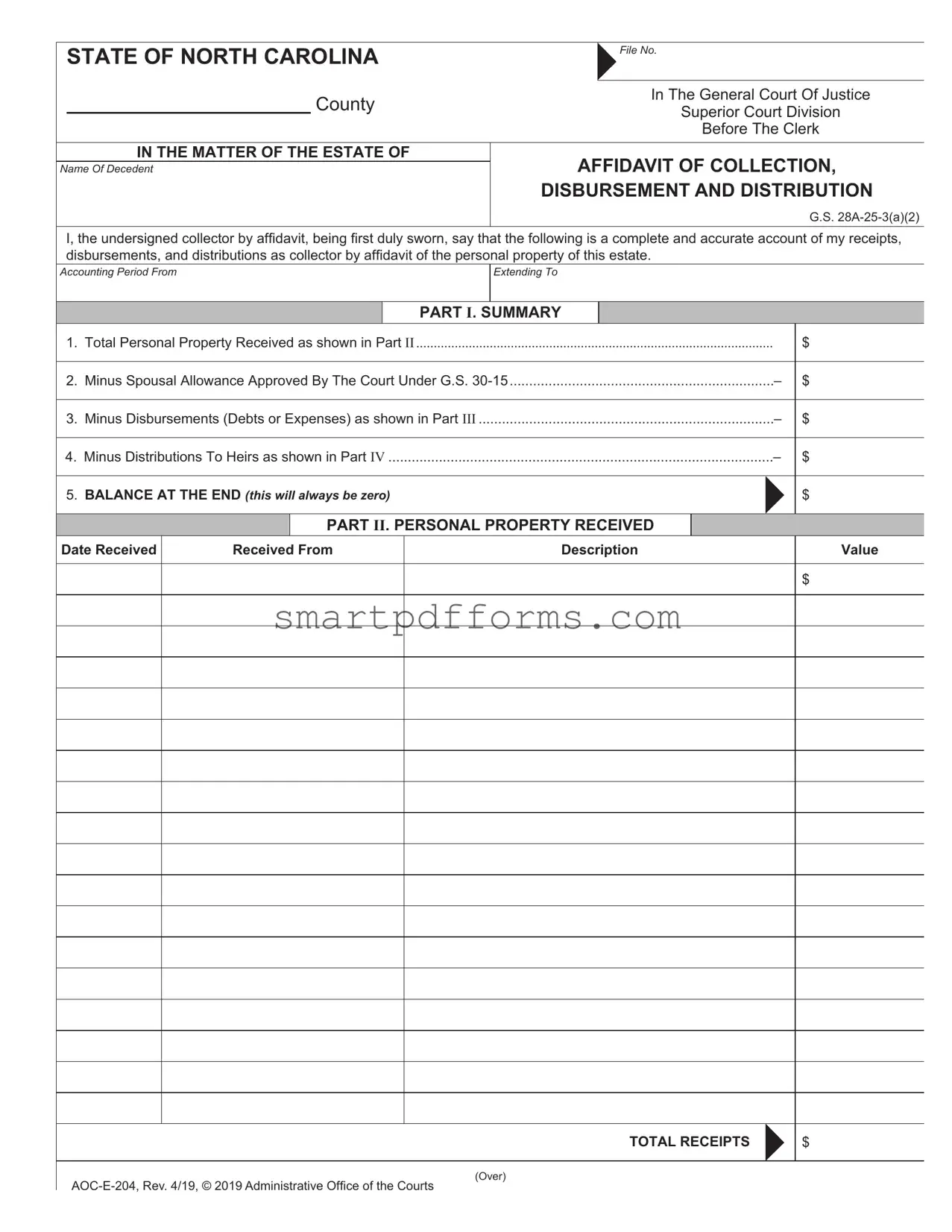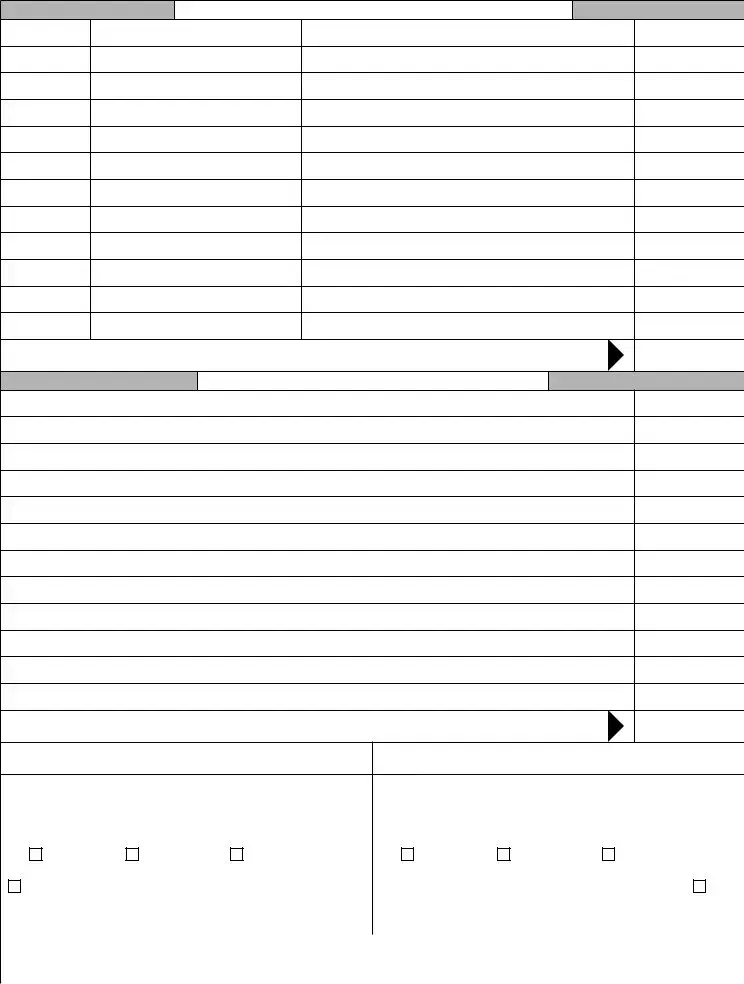In the legal landscape of North Carolina, handling the estate of a deceased individual involves meticulous processes and documentation, one of which is the AOC-E-204 form, under the auspices of the General Court of Justice Superior Court Division. This affidavit is a critical tool used for the collection, disbursement, and distribution of the personal property within an estate, pursuant to G.S. 28A-25-3(a)(2). The form requires the collector by affidavit, typically a close relative or legal representative of the deceased, to meticulously record all transactions related to the estate’s personal property. From detailing every item of personal property received, to itemizing allowances, disbursements, and eventually, distributions to heirs, the AOC-E-204 ensures transparency and accountability throughout the process. Notably, the form includes sections that guide the affiant through summarizing the total personal property received, subtracting any spousal allowance approved by the court, and listing disbursements made for debts or expenses, before concluding with the balance distributed to heirs, which, by the form’s design, should always net to zero. This careful accounting is sworn to under oath before an official authorized to administer oaths, ensuring its accuracy and reliability. The formulation of the AOC-E-204 form, thus, plays a pivotal role in the streamlined administration of estates, safeguarding the interests of all parties involved and adhering to North Carolina’s legal standards.


